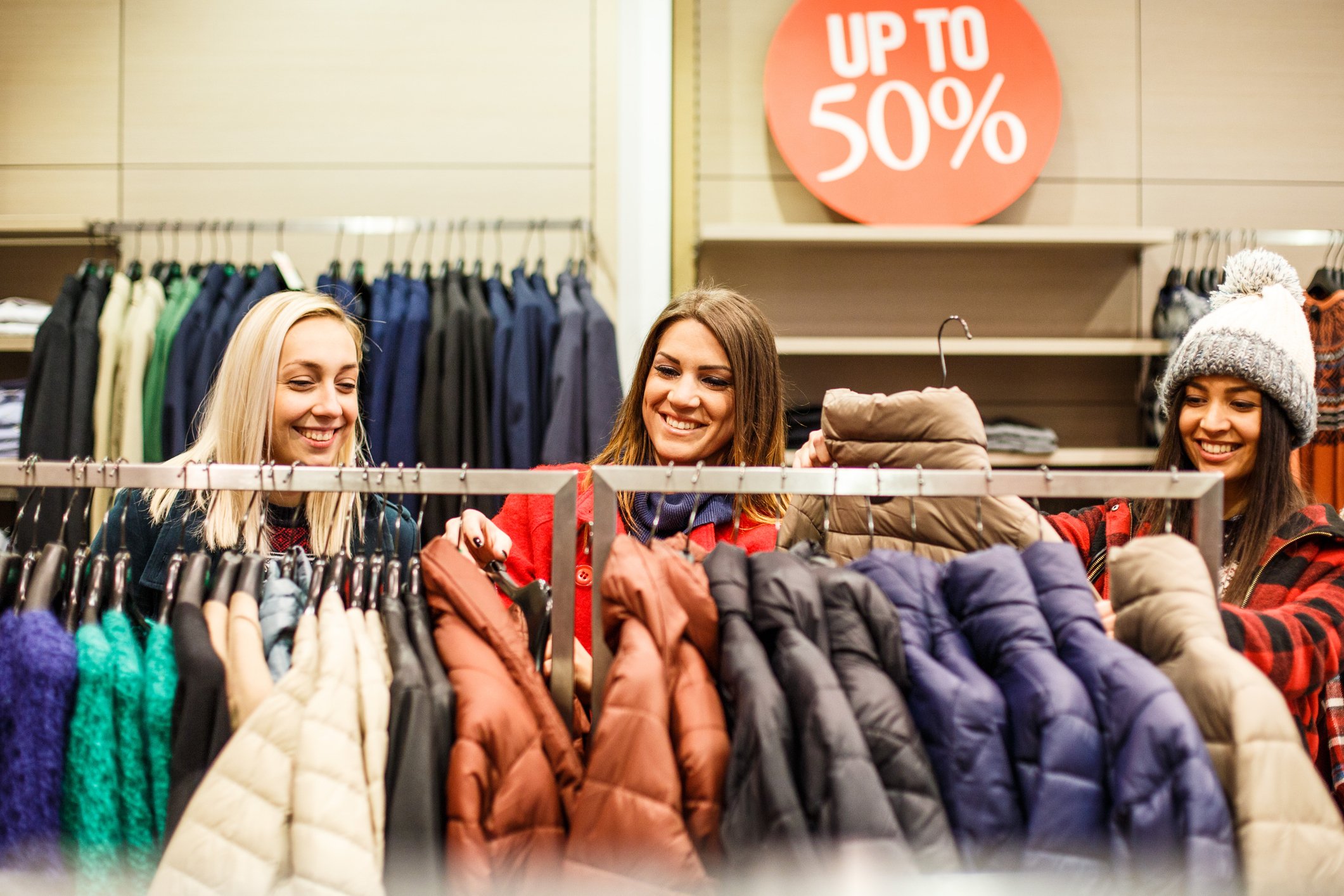Off-price retailers TJX Companies (TJX +1.98%) and Ross Stores (ROST +0.44%) haven't escaped the coronavirus crisis. Like department stores and smaller apparel chains, TJX and Ross have temporarily closed stores as consumers stay home. And both companies have seen their shares drop this year -- 16% for TJX and 17% for Ross.
Earnings in the current quarter are surely suffering, and share recovery will take time. But TJX and Ross are better positioned to perform in the post-lockdown world than their full-price peers.
TJX owns TJ Maxx, Marshalls, and Homegoods stores, while Ross Stores owns stores by that same name as well as dd's Discounts. As businesses reopen in the U.S. and people return to work, these off-price players may benefit from the woes of department stores and apparel chains.

Image source: Getty Images.
Inventory at a discount
Here's how: Some clothing retailers will probably sell inventory at a discount to replenish cash and make room for newer items. And discounts may be considerable at struggling retailers. The perfect opportunity for TJX and Ross to fill their racks -- and at an interesting price. Off-price retailers buy items in many ways, including buying a company's extra inventory or end-of-season collections.
A weaker economic climate also may favor off-price retailers. Once the worst of the coronavirus outbreak is behind us, the economic impact is likely to linger. U.S. weekly unemployment claims have surged to record levels, with the five-week total now more than 26 million. People who have lost their jobs or found their revenue lower now than before the crisis may be more likely to shop at an off-price retailer than elsewhere as they seek to save money.
Even when finances aren't a worry, off-price is a popular segment. S&P Global Market Intelligence in a retail analysis said the sector is in "expansion mode" as it increases its store count. And about 91% of adults shop at off-price retailers, research from the International Council of Shopping Centers shows. Almost three quarters of consumers who shop at off-price chains prefer them to other stores, according to the report.
So we know inventory and economics are external factors that will help off-price retailers. Now, for a quick look at TJX and Ross.
Highest cash level ever
TJX has increased annual revenue for the past 30 years, and in its fiscal 2020 report said same-store sales for the year rose 4%. That surpassed the company's guidance for growth of 3%. The company started 2020 with $3.2 billion in cash and cash equivalents, its highest level ever.
Like TJX, Ross also has posted annual sales gains for about 30 years and started 2020 with its highest level of cash and cash equivalents ever. Same-store sales rose 3% in fiscal 2019, while overall sales for the year climbed 7%.
Both companies also have a history of positive earnings surprises. TJX has surpassed analysts' earnings-per-share expectations in three out of the past four quarters, and Ross beat the forecasts in all four quarters.
TJX and Ross are taking similar measures to address the coronavirus outbreak, such as cutting capital expenditures and preserving financial liquidity. TJX recently said it drew down $1 billion from its revolving credit facilities, while Ross said that is has drawn down $800 million under its revolving credit facilities.
Of course, TJX and Ross could face two potential headwinds once stores open. Customers may be hesitant about touching clothing until the coronavirus outbreak is truly over. And if the economy worsens, some shoppers may refrain from purchasing non-essentials -- even if the price is low.
Still, TJX and Ross went into this crisis strong, and likely these retail companies will emerge with the ability to resume growth into the long term.






